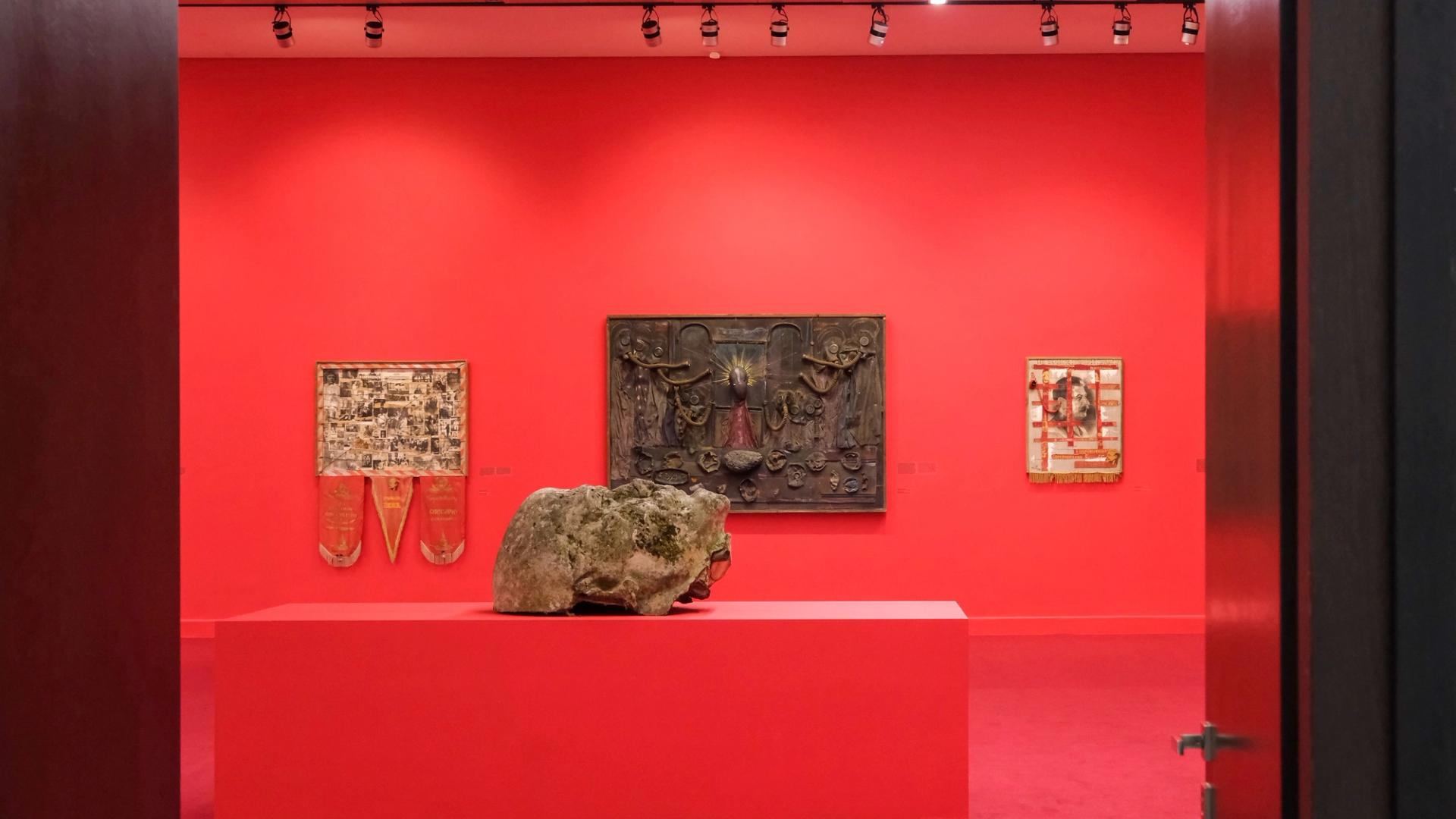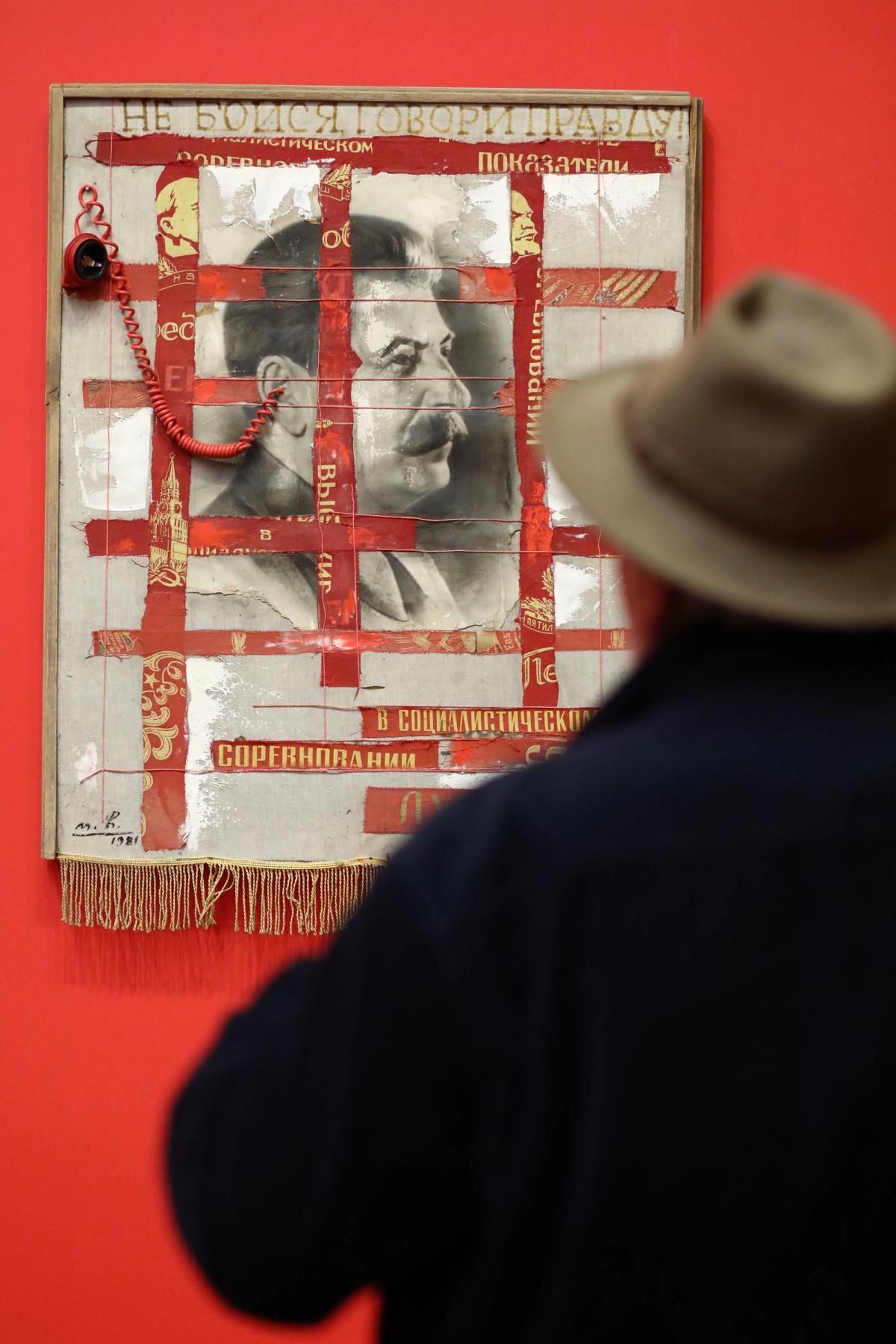The day of the Tbilisi Massacre, 9 April 1989, when Soviet troops brutally suppressed a peaceful demonstration in the city has been etched in the memory of the Georgian people. Today, the date also serves as a reminder for many of Georgia's struggle for independence as well as the enduring legacy of Soviet rule.
As thousands of Georgians took to the streets last week on 9 April to protest against a controversial "foreign agent" law, an exhibition nearby at the Georgian Museum of Fine Arts opened, offering a sobering reflection on the country's Soviet past. The bill would mean organisations who receive more than 20% of their funding from abroad would need to register as agents of foreign influence. (Even among lawmakers the bill has been divisive; on 15 April, members of the Georgian parliament came to blows in a debate on the legislation.) The proposed bill has also been referred to as the "Russian law" by protesters because of its similarities to Russia's own foreign influence legislation.
Within the museum's walls, the exhibition—From Soviet Memory to April 9—offers a critical examination of Georgia's complex history, providing insight into the geopolitical tensions of a country that, since 2008, has had 20% of its land occupied by Russian forces.

Lenin's weathered bust is emblematic of an era fraught with political turmoil Courtesy Georgian Museum of Fine Arts
Objects on view include a large, weathered, bust of Lenin emblematic of an era fraught with political turmoil. Lenin's sculptural fragment, which lies on its side in the centre of the show, signifies what the exhibition's curator Kote Bolkvadze has called "a post-structural way of telling stories about our Soviet past… it reflects a Red regime under both demonisation and romanticisation".
The exhibition also features works by artists spanning generations, each of whom offer a unique perspective on Georgia's Soviet experience. From Ketevan Magalashvili's social realist traditions to Irakli Farjiani's depictions of national and religious motifs, the exhibition strives to reclaim symbols and histories associated with Georgia’s relationship to its juggernaut neighbour to the north.
Bolkvadze told The Art Newspaper that, in order to present a measured and holistic view of the history in question, "it is crucial to systematise and contemplate the Soviet past via art or different cultural fields." Indeed, this sentiment has been echoed by others in the country.

Opening of the fair, its art director has describe it as "geopolitical melting pot" Courtesy Tbilisi Art Fair
At the opening of Tbilisi Art Fair (TAF) on 11 April, the country's president, Salome Zourabichvili, told The Art Newspaper that: "without culture, Georgia would not exist today as a sovereign country". Meanwhile the fair's art director, the former lawyer turned diplomat Eric Schlosser, spoke of TAF as a beacon for intercultural exchange. "Here in Tbilisi, it is like a geopolitical melting pot,” Schlosser told The Art Newspaper. “We have artists from Palestine and Israel, Russia and Ukraine, alongside Georgians, Azeris, Aremanians and Uzbeks, French, Germans and Italians."
Many artists at the fair are exhibiting work responding to the political climate—including Tedo Rekhviashvili, an artist whose work looks to untangle Georgia’s Soviet memory. Symbolising defiance and resilience in the face of oppression, Rekhviashvili’s works, on view at both TAF in the booth of Kera Gallery and offsite at an exhibition at the local project space Silk Factory, explore Georgia’s history through the metaphor of restoring an old car.
In the space reserved for Tbilisi Public Art, the newly formed entity funded by the city designed to fund permanent public art, the Georgian-born, Brussels-based artist David Natidze has displayed a stone sculpture: Resistance (2023). First unveiled last November in Avlabari Square, the work can be seen as a metaphor for the tensions in the country arising from fears of covert Russian control and unease with its Soviet past; it depicts a harrowing figure’s face lurking behind a sheet.


